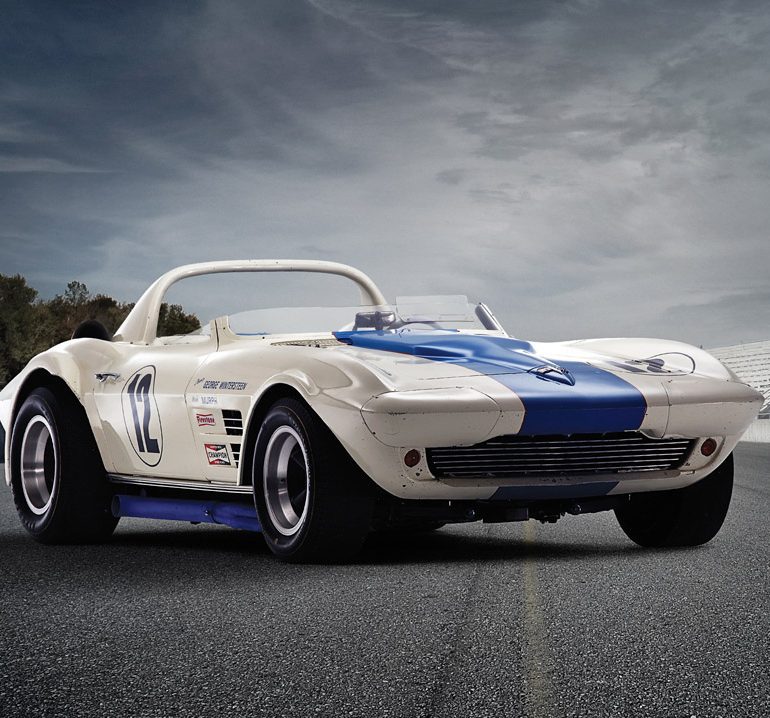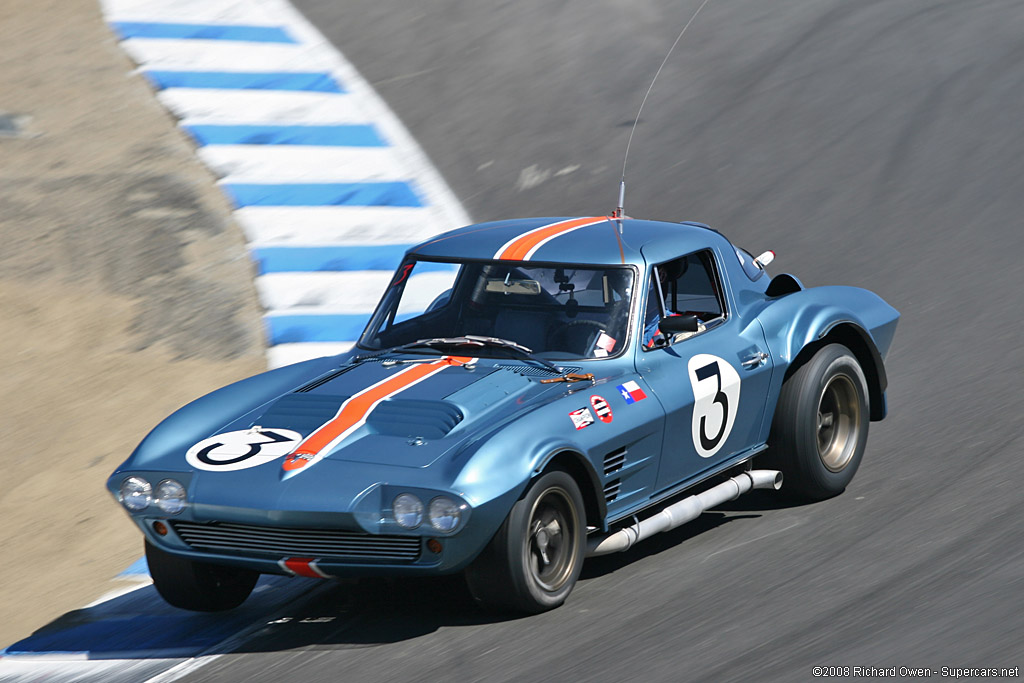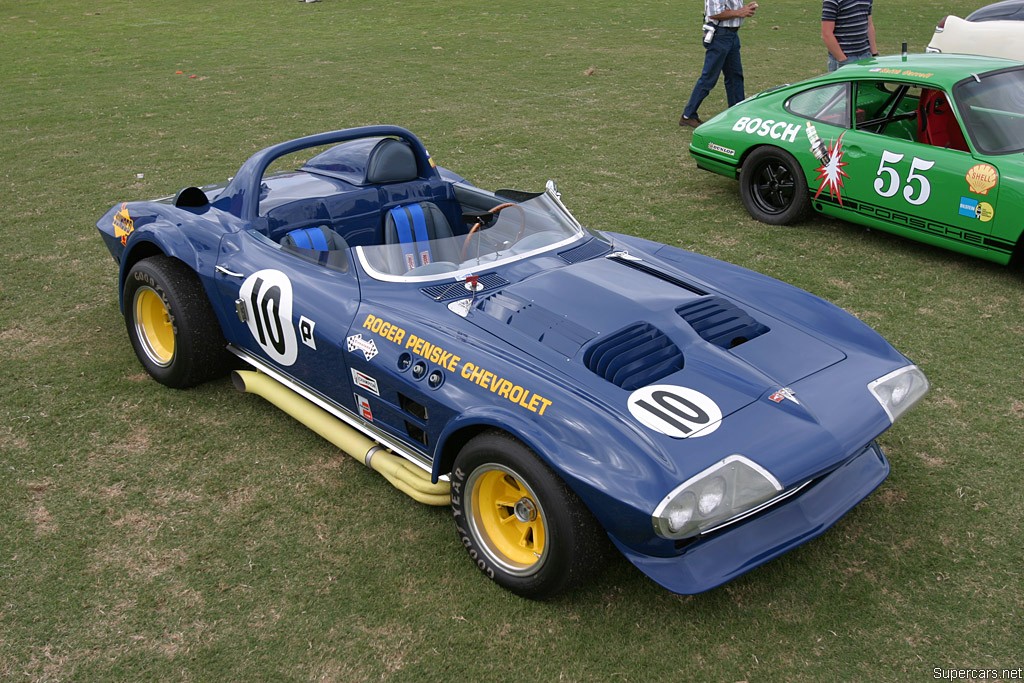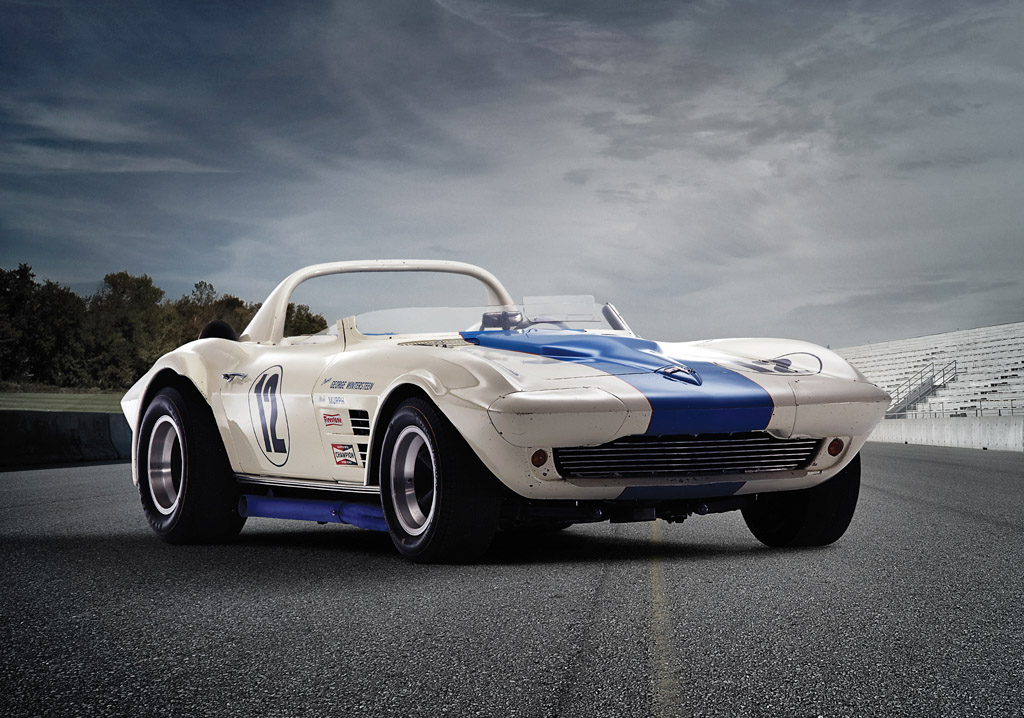1962→1964 Chevrolet Corvette Grand Sport
At the 1962 Riverside Grand Prix, two new production cars faced each other for the first time. These were the Corvette Stingray and Shelby Cobra. Both had to impress Chevrolet and Ford respectively, but since the Cobra was 50% lighter it naturally ran away from all the Corvettes. This was an embarrassing result for Chevrolet and all aces for Ford. GM’s Engineer Zora Duntov, the father of all performance Corvettes, knew a lighter Stingray would be needed immediately and thus the Grand Sport was conceived.
In 1963, the ‘big three’ were restricted from racing due to a ban on official race programs by the American Manufacturer’s Association (AMA). To stay ahead of the gentlemen racers in Shelby Cobras, Zora convinced Bunkie Knudsen to build 100 lightweight Corvettes, enough to satisfy the FIA’s homologation requirements.¹ The idea was to sell these cars to privateers and not directly participate in racing.
Zora’s first step was to make a new ladder-type frame that was cutoff at the rear axle and considerably lighter than its production counterpart. Furthermore, all the suspension components were lightened and the fuel tank was repositioned closer to the cockpit.
Extending from this simple chassis was a complex steel space frame that supported the body. The panels were made from hand-laid fiberglass that were considerably thinner and lighter from stock. Inside, a production-looking interior was fitted, but it was delicate and non-functional. The doors were stripped of their hardware, instead only having a Velcro strap for the window.
Power was initially planned to come from an aluminum version of the 327 small-block V8.¹ Eventually a series of different engines would be fitted in many cars including the experimental, ‘porcupine’ 427 with an aluminum-block and DOHC valve train. The first three coupes were fitted with more dependable cast-iron 327s that were upgraded with 58mm side-draft Webers later in the season.
The first Grand Sport coupe was finished in December of 1962, and at 1900 lbs weighed 37% lighter than stock.¹ The initial tests at Sebring looked favorable, but too much information leaked and Duntov was under pressured by GM to stop development just one month later. None of the cars showed up at Sebring as planned, but thankfully none were scrapped either.
Duntov was reluctant to retire his project and instead sold two of the three working cars to private teams. Unfortunately, these two Grand Sports were limited to C-Modified class when they were really designed for the production Grand Touring class. Duntov wanted to maintain development and make the cars more competitive but the AMA ban meant that it was technically not allowed.
Not resting on his laurels, Duntov took the first Grand Sport and developed the suspension to support larger Goodyear 8.20×15 stock car tires. These nearly doubled the tire widths, increasing grip from 0.9g to 1.1g.¹ With huge flares, new scoops to clear the 58mm Weber carburetors and rear mounted differential coolers, three of these definitive coupes were prepared for the Nassau Speed Week. Despite front end lift problems, Dick Thompson won his class and Duntov finally got his revenge from Shelby.
After Nassau, Duntov was encouraged to press on but GM didn’t want any of it. The remaining two bodies were put into storage and any factory development was halted. After a lengthy stay in the factory the two final bodies were later prepared for the upcoming 1964 Sebring race. They were both converted into roadsters to decrease pit times during driver changes. Furthermore, they were fitted with pneumatic jacks, easy access oil/water fillers and big block porcupine engines. A Sunoco-sponsored roadster contested Sebring and was the fastest car on the track, but failed after Dick Thompson had a minor accident.
Despite active and secretive involvement by Chevrolet, the Grand Sports never got honest chance in motor sport. The AMA ban strictly outlawed factory racing and support which killed cars like the Grand Sport.
Chassis and Sales
001-Penske Roadster. In 1964 Penske bought both Grand Sport Roadsters from Chevrolet and raced one alongside his L88 Coupe prototype at the 1966 12 Hours of Sebring. Afterwards it was sold to amateur racer Jerry Hanna.
Almost 50 examples of this particular car have been replicated, many by Mid America Industries and fitted with a heavy duty front and rear independent suspension from a C4.
002-Wintersteen Roadster. Displayed only twice before being sold to Penske. The car wasn’t raced and instead sold to George Wintersteen and like 001 was prepared with a 427 big block. In this specification it was painted in white livery and raced in the 1966 USRRC season. It traded hands a few times, but remained in largely original condition up until the 1990s.
When Jim Jaeger decided to vintage race 002, the original body and engine was removed to fit replica pieces. The engine was also changed from a 426 to an aluminum block 377 in³ dry-sump engine as originally built and prepared by Chevrolet. It raced with these bits for several years and later the original peices were refit.
In 2009, 002 became the only Grand Sport offered in a publc sale by RM Auctions at their 2009 Automobiles of Arizona Auction. It didn’t sell with a high bid of $4,900,000 USD and was described as “one of the most important historic sports-racing cars of all time.” Later it was included into the Simeone Foundation Museum.
Sources and Further Reading
1. Van Valkenburg, Paul.Chevrolet-Racing?.SAE: 2000.
2. Friedman, Dave. Corvette Grand Sport 1962-67. Motorbooks: 1969.
1962→1964 Chevrolet Corvette Grand Sport Image Gallery
See full 1962→1964 Chevrolet Corvette Grand Sport Image Gallery
In Detail
| type | Racing Car |
| production years | 1962 – 1964 |
| engineers | Zora Arkus-Duntov |
| production | 5 |
| engine | V8 |
| position | Front Longitudinal |
| aspiration | Natural |
| block material | Cast Iron |
| valvetrain | Pushrod OHV, 2 Valves per Cyl |
| fuel feed | 8 Sidedraft Weber 58mm |
| displacement | 5358.57 cc / 327 in³ |
| body / frame | Fiberglass Body over Steel Tube Frame |
| driven wheels | RWD |
| front tires | Goodyear 8.20×15 Stock Car |
| rear tires | Goodyear 8.20×15 Stock Car |
| front brakes | Girling Discs |
| rear brakes | Girling Discs |
| front wheels | F 38.1 x 20.3 cm / 15 x 8 in |
| rear wheels | R 38.1 x 20.3 cm / 15 x 8 in |
| steering | Rack & Pinion |
| f suspension | Wishbones w/Transverse Leaf Spring, Shock Absorbers |
| r suspension | Transverse Leaf Spring, Shock Absorbers |
| curb weight | 863 kg / 1900 lbs |
| transmission | Borg Warner T-10 4-Speed Manual |







